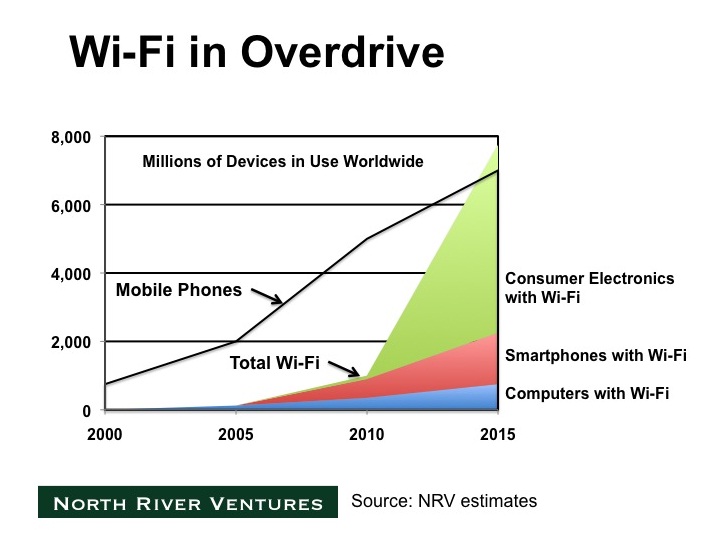No matter what a technology originally is thought to offer, it often happens that the eventual use is quite different. So it is with Wi-Fi, originally conceived as a local premises distribution technology, but which increasingly is becoming part of the carrier bandwidth equation.As with so many other parts of the loosely-coupled Internet ecosystem, carriers are integrating the use of Wi-Fi even when they do not own the Wi-Fi facilities. At the same time, Wi-Fi has become a part of the overall carrier network in the form of public Wi-Fi hotspot networks, and will assume a bigger role as small cell overlays start to be deployed as well.
In fact, by 2016, it is conceivable that as much as 60 percent of all mobile data traffic will be offloaded to Wi-Fi, according to a report from Juniper Research. In large part, that possibility is driven by the widespread availability of Wi-Fi features in most mobile consumer electronic devices.
?In 2012, a cumulative five billion Wi-Fi enabled devices have been shipped. Recent explosive growth has been largely driven by the smartphone and laptop markets, but future success will be dependent on Wi-Fi penetration into newer markets such as connected home and automotive devices.

Cable companies these days are opting to spend their own capital on “untethered” approaches to broadband, rather than “mobile.” Time Warner Cable, for example, is a partner with Comcast, Cablevision, Cox Communications and Bright House Networks in a public hotspot network of about 50,000 locations, and now is adding Wi-Fi service as well. Time Warner invested in Wi-Fi early in 2012.
Though cable operators have not been able to really figure out how to create a big mobile communications business, the current effort aims to extend the use of fixed connections inside and outside the Time Warner network footprint.
Untethered communications, inside or outside the network footprint, is an underpinning for the strategy of adding value for fixed network connections and a way to enable the consumption of cable content outside the home.
The business case is made easier by the fact that in many cases a mobile phone uses a Wi-Fi connection more than the mobile network.
Whether used by a mobile service provider to beef up coverage, capacity, or to offload traffic from the mobile network, Wi-Fi has become part of the underlying infrastructure.
Cable operators will use Wi-Fi in part to increase the value of a fixed connection, and in part to create the underpinning for remote use of cable content.
Either way, Wi-Fi is just another tool used by the carrier as part of its core network.
Edited by
Brooke Neuman
 QUICK LINKS
QUICK LINKS